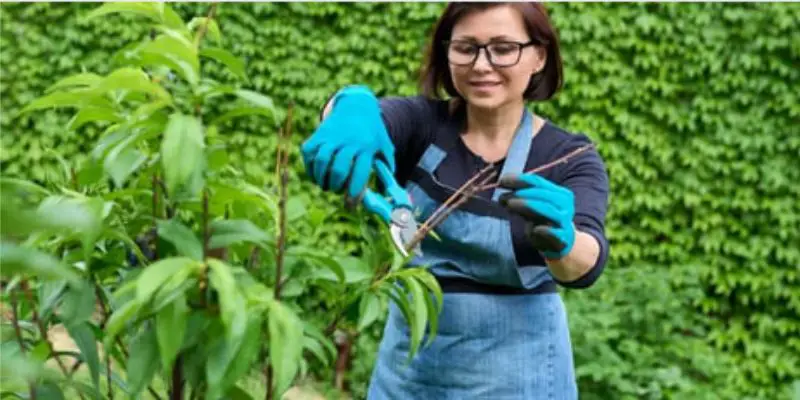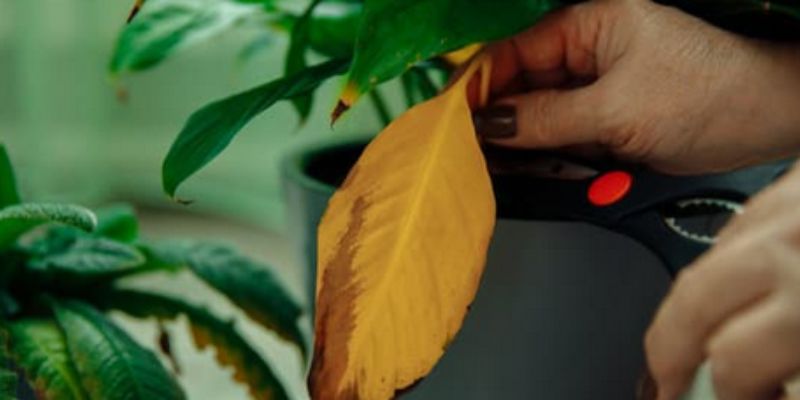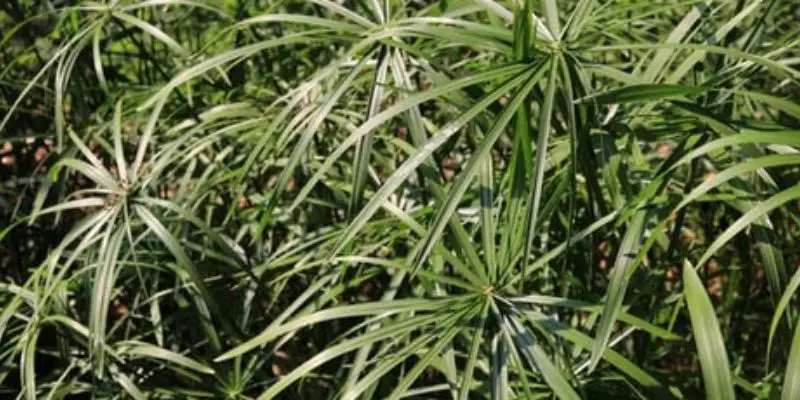As a professional landscaper with over 10 years of experience, I’m often asked how to properly prune juniper shrubs and trees. Proper pruning is essential for junipers to thrive. It helps promote healthy growth, enhances their natural shape, and keeps them neat and tidy.
In this comprehensive guide, I’ll leverage my Pruning expertise to overview everything you need to know about how to prune juniper. I’ll explain the best tools to use, timing of when to prune, and techniques for pruning juniper varieties like Blue Point and Blue Rug. My goal is to equip you with the skills to prune your juniper like a pro.
Why Prune Juniper
Pruning is beneficial for both health and aesthetic reasons. It encourages new growth that leads to a fuller, vibrant juniper. Specific reasons to prune juniper include:
- Promote plant health by removing dead or diseased branches
- Thin overgrown areas to improve air circulation
- Shape and contain juniper to keep neat appearance
- Remove crossing/rubbing branches for optimal growth
- Rejuvenate older junipers by pruning back hard
- Improve light exposure and growth lower on plant
- Encourage fuller new growth through tip pruning
- Control size from getting too large and unruly
Neglecting to prune juniper can result in bare patches, poor shaping, and shaggy growth. Take the time to properly prune, and you’ll be rewarded with a healthy, thriving juniper.
When to Prune Juniper
Pruning juniper at the right time of year is important. The best time for pruning is late winter or very early spring before new growth emerges.
- Winter pruning allows you to see the full branch structure without leaves in the way. It also reduces sap bleeding that can occur with pruning in warmer months.
- Pruning in late winter or early spring sets up the juniper for vigorous new growth as spring approaches.
Avoid pruning juniper in fall. Pruning stimulates new growth, which tender new shoots could get damaged by winter weather. You can still prune in summer or fall if needed for shaping or damage, but limit to minor touch-up pruning.
Tools Needed for Pruning Juniper
Having the right pruning tools makes the job easier. The most useful tools for pruning juniper include:
Bypass Hand Pruners
Bypass pruners make clean cuts on smaller branches up to around 1⁄2 inch diameter. Look for pruners with curved blades that slice cleanly like scissors without crushing.
Loppers
Loppers extend your reach for pruning small branches up to about 1 inch thick. Compound lopper mechanisms provide extra cutting leverage.
Pruning Saws
For larger branches, a sharp pruning saw makes quick work of cutting through tougher wood. Folding saws are great for mobility in the garden.
Pole Pruners/Saws
Pole pruners attach a pruner or saw head to an extendable pole, allowing you to reach high branches from the ground.
Safety Gear
Protect yourself with gloves, eye protection, and long sleeves when pruning. A hardhat is also a good idea if cutting overhead branches.
How to Prune Juniper Varieties
Techniques for pruning depends somewhat on the particular variety and growth habits of the juniper. Here’s how to properly prune some of the most popular types:
Blue Point Juniper
Blue Point junipers are dense upright plants that can grow quite tall. Prune annually in early spring before new growth starts.
- Prune back top and sides, cutting just above buds or branches. This contain size and promotes fullness.
- Thin inner branches to open up center if they become too dense.
- Remove dead or crossing branches anytime.
Blue Rug Juniper
Blue Rug forms a low, spreading horizontal mound. Prune annually to maintain desired size and shape.
- Snip back errant branches straying beyond the plant’s edge.
- Cut just above an outward facing bud or branch.
- Remove dead branches as needed to keep neat.
Creeping Juniper
Creeping junipers are low, ground-hugging varieties. Annual pruning keeps growth contained.
- Trim errant growth extending beyond the plant’s edge.
- Cut back the growing tips of long runners or where they start crowding each other.
- Remove dead foliage as needed to maintain health.
Fullmoon Juniper
Fullmoon junipers make round compact mounds ideal for accenting corners. Prune annually before new growth emerges.
- Prune back tips of branches 2-4 inches to shape its rounded form.
- Thin congested inner growth to allow light and air penetration.
- Cut out dead branches anytime to keep clean interior.
How to Prune Juniper Step-By-Step
Follow these steps for pruning juniper like a professional:
1. Gather Tools
Gather your pruning tools – bypass hand pruners, loppers, folding saw, pole pruner, safety equipment, etc. Sanitize tools before starting with rubbing alcohol.
2. Select Branches to Remove
Visually inspect the juniper and determine which branches need pruning. Look for dead wood, crossed/rubbing branches, errant growth straying from shape, areas that need thinning, etc.
3. Make Cuts Just Above a Bud or Branch
Position hand pruners or loppers just above an outward facing bud or side branch. Cut at a 45 degree angle sloping away from the bud. This encourages new growth in the direction of the remaining bud.
4. Remove Dead Branches
Clip off any fully dead branches back to the main stem. Also shorten partially dead tips, cutting back into green living tissue.
5. Thin Overcrowded Areas
Select inner branches in overgrown areas and cut them back to open up interior. Take out thin weaker growth to give others more space.
6. Shape and Contain Growth
Prune back tips of new growth and branches extending out of bounds from desired shape. Trim errant branches back to an inward facing bud to redirect growth.
7. Clean Tools and wounds
Wipe down tool blades during pruning to remove sap buildup. Clean and disinfect all tools after finishing. Seal larger pruning wounds with pruner sealer/wound paint.
Pruning Tips and Precautions
Follow these tips to ensure proper, healthy pruning of juniper:
- Never remove more than 1/3 of total foliage when pruning juniper or you risk damaging plant health.
- Time tip pruning so new growth hardens off before winter if in cold climates.
- Prune inner branches with care to avoid leaving unsightly holes in foliage.
- When in doubt, prune minimally. You can always remove more next time.
- Sterilize pruning tools before each use to prevent spreading disease.
- Prune selectively, keeping the natural shape and features of juniper in mind.
Conclusion
I hope this guide has provided you with the knowledge to successfully prune juniper shrubs and trees. Proper pruning is crucial for maintaining plant health, neat form, and beauty. Follow the tips outlined to prune juniper varieties like Blue Point and Blue Rug. With the right tools and techniques, you can achieve professional results. Regular pruning lets your juniper thrive and enhances its natural elegant shape.
Also read:
7 Best Top Rated Electric Hedge Trimmers – A Detailed Buying Guide
Best Electric Bush Trimmers – Top 5 Reviews and Buying Guide
Frequently Asked Questions
Below are answers to commonly asked questions about pruning juniper:
How much should I prune off a juniper?
As a general rule, avoid removing more than 1/3 of a juniper’s total branches and foliage when pruning. Cutting back more risks damaging plant health. Prune strategically just enough to revitalize and shape growth.
Should I deadhead spent blooms on juniper?
Most juniper do not require deadheading spent blooms. The dried blooms/cones persist through winter providing continued interest before dropping off naturally. No need to remove the dried cones.
Can I hard prune an overgrown juniper?
Yes, you can rejuvenate an overgrown, neglected juniper by cutting all branches back severely to 6 inches from the main trunk. This stimulates abundant new growth. Then maintain shape annually.
How do I prune a juniper bonsai?
Use sharp bonsai shears and tweezers to precisely prune and pinch back new shoots. Carefully trim crossing, congested, and errant branches to refine the miniature shape. Prune just above buds or branches.
Should I fertilize juniper after pruning?
Applying a balanced fertilizer around your junipers in early spring as growth resumes is beneficial. This fuels rejuvenation after pruning. Organic compost also nurtures soil health.

Michael Glenn is a certified arborist and horticultural expert with over 15 years of experience in the landscape industry. His passion for plants and trees has led him to become a sought-after authority on pruning and trimming techniques. Glenn’s in-depth knowledge of proper pruning methods, timing, and tools has helped countless homeowners and professionals maintain healthy, aesthetically pleasing gardens and landscapes.
In addition to sharing his pruning expertise through practical tips, step-by-step guides, and expert advice, Glenn is also a respected author of pruning tool buying guides. His comprehensive reviews and comparisons ensure readers can make informed decisions when investing in quality loppers, pruning shears, saws, and other essential equipment. With a deep understanding of plant biology and sustainable practices, Glenn’s writing empowers audiences with the knowledge needed to properly care for green spaces.





